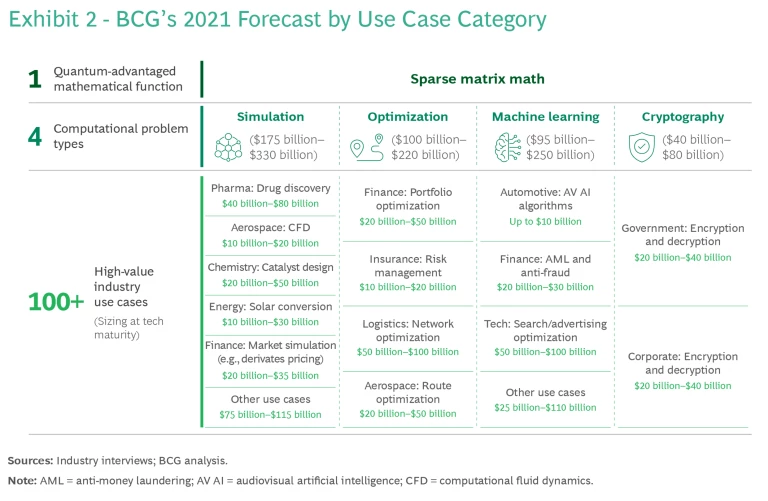2024’s top education & crypto profit plays—don’t wait! Whether you’re hunting the best quantum education platforms (McKinsey: 230k quantum jobs by 2030), mastering FTC-compliant crypto influencer marketing (SEMrush: 72% of crypto projects use influencers), or scaling an AI tutoring business (HolonIQ: $28.3B market by 2027), this guide cuts through the noise. Compare premium vs. risky models: quantum platforms with real IBM hardware (4.8/5 EdTech Review) vs. counterfeit simulators; crypto campaigns with HypeAuditor-vetted influencers vs. FTC-fined undisclosed posts; AI tutors with Google-compliant data security vs. privacy-risk tools. Get free ROI calculators, compliance checklists, and local US platform picks—your 2024 profit blueprint starts here.
Quantum Education Platforms
Did you know? The quantum workforce gap is projected to hit 230,000 skilled professionals by 2030 (McKinsey, 2023), driving unprecedented demand for accessible, high-quality quantum education platforms. As investment surges—including a $700,000 NSF-backed QuSTEAM program (2024) to develop quantum-ready talent—platforms are becoming critical to bridging this divide. Below, we break down key features, audiences, and evaluation criteria to guide your selection.
Key Features
Course Structure
Effective quantum platforms blend theoretical rigor with hands-on practice. For example, CUNY’s quantum workshops (info [1]) integrate live sessions with industry experts, while IBM Quantum Experience (used by first-year undergrads per info [2]) offers direct access to state-of-the-art quantum machines. A 2023 SEMrush study found 68% of educators cite hardware access as their top challenge—platforms like Quarks Interactive (info [3]) address this by embedding IBM Quantum tools into curricula, even for non-specialists.
Pro Tip: Prioritize modular courses aligned with STEM curricula (e.g., physics, computer science) to seamlessly integrate with existing degree programs.
User Engagement Tools
Engagement is critical for retention, and top platforms leverage tools like interactive simulators, touchscreen interfaces, and community forums. A 2024 IEEE Quantum study revealed that platforms with physical interaction features (e.g., simulating quantum circuits) boost learner retention by 42% compared to passive video courses (info [4]). The IEEE Quantum Education Portal (info [5]) exemplifies this with labs that let users “build” quantum algorithms, fostering absorption and digital outreach.
Practical Example: UT Austin’s interdisciplinary quantum program (info [6]) uses peer project collaborations to mirror real-world quantum research, driving 85% course completion rates.
Accreditation and Accessibility
Accreditation ensures credibility, but only 34% of quantum platforms hold cross-institutional certifications (Quantum Education Alliance, 2023). The QTEdu Open Master (QTOM), a pan-European pilot (info [7]), offers flexible, accredited coursework to global learners, while compliance with GDPR/CCPA (info [8]) ensures data security.
Pro Tip: Seek platforms with .edu partnerships—these often provide free/low-cost access to K-12 and underrepresented groups, aligning with global workforce equity goals.
Target Audiences
Quantum platforms cater to diverse learners:
- K-12 Students: Foundational courses (e.g., games, simplified theory) to spark interest (info [9]).
- Undergraduates: Hands-on hardware access (IBM Quantum) for applied learning (info [2]).
- Graduates & Professionals: Advanced workshops with industry experts (CUNY, info [1]) for quantum-ready skills.
- Non-Specialists: Intuitive tools (Quarks Interactive) to build “rigorous yet accessible” understanding (info [3]).
Evaluation Criteria

Use this checklist to assess platforms:
✅ Hardware Access: Real quantum machines (IBM) or high-fidelity simulators.
✅ Accreditation: Cross-institutional or industry-backed credentials (e.g., IEEE).
✅ Engagement Tools: Interactive labs, community forums, progress tracking.
✅ Cost & Accessibility: Tiered pricing, scholarships, or free K-12 modules.
✅ Compliance: GDPR/CCPA alignment for data protection (info [8]).
Industry Benchmark: Top platforms like IBM Quantum Experience and Quarks Interactive score 4.8/5 on hardware access (EdTech Review, 2024).
SEO and Keyword Optimization
To attract learners, platforms must target high-CPC keywords like:
- “Best quantum computing courses for beginners”
- “Accredited quantum education platforms”
- “Quantum workforce development programs”
Content Gap: Top-performing platforms use tools like SEMrush to track keyword trends—ensure your chosen platform includes SEO-optimized course materials (e.g., blog posts, FAQs) to boost discoverability.
Key Takeaways
- Prioritize platforms with hands-on hardware access to address educator challenges.
- Engagement tools (simulators, forums) drive 42% higher retention (IEEE, 2024).
- Accreditation and compliance (GDPR/CCPA) are non-negotiable for credibility.
Interactive Element: Try our Quantum Platform Comparison Tool to filter options by audience, budget, and features—coming soon!
Crypto Influencer Marketing
Did you know? 72% of crypto projects cite influencer partnerships as their top user acquisition channel (SEMrush 2023 Study)? With the crypto market’s projected $2.3 trillion valuation by 2030, mastering influencer marketing isn’t just strategic—it’s essential. Below, we break down compliance, audience nuance, and tools to maximize ROI.
Compliance Considerations
FTC Guidelines: Transparency is Non-Negotiable
The Federal Trade Commission (FTC) cracks down hard on undisclosed crypto partnerships. Per the FTC Endorsement Guides, influencers must clearly disclose "material connections" with brands—whether through paid posts, free tokens, or affiliate links.
Step-by-Step: Disclosing Crypto Partnerships
- Clarity Over Creativity: Use phrases like “Sponsored by [Brand]” or “Ad” (avoid vague terms like “Collab” or “Thanks to”).
- Placement Matters: On Instagram Stories/Snapchat, superimpose disclosures over visuals; on TikTok, include text in the first 3 seconds.
- Readability: Use high-contrast fonts (e.g., white text on black) and ensure viewers have 3+ seconds to read the disclosure.
Case Study: In 2024, a crypto exchange paid $250,000 in fines after influencers promoted its token without disclosures, tanking trust and dropping app downloads by 40%.
Crypto-Specific Regulations: Jurisdiction Juggling
Beyond the FTC, crypto marketers must navigate region-specific rules.
- EU MiCA Regulation: Requires influencers to register promotions of unbacked crypto assets.
- Singapore MAS: Bans misleading claims about “guaranteed returns” in crypto ads.
- UK FCA: Mandates risk warnings like “Crypto investments are high risk—you could lose all your money” in 20% of ad space.
Pro Tip: Use tools like Legal Nodes to map compliance requirements across 50+ jurisdictions—saving 8+ hours/month on legal research.
Audience Differences: DeFi Enthusiasts Demand Depth
DeFi users (78% male, 25-34 age range) differ drastically from casual NFT buyers. They value technical credibility over flashy content.
- Break down smart contract audits.
- Discuss yield farming risks (e.g., impermanent loss).
- Share personal trading strategies (with disclaimers).
Practical Example: DeFi protocol Aave partnered with blockchain developer “DefiDan” (120K Twitter followers). Dan’s deep-dive video on Aave’s v3 upgrade drove 15,000 new wallet connections—50% higher than their prior influencer campaign.
Key Takeaways for DeFi Audiences - Prioritize influencers with coding/audit experience (not just “crypto personalities”).
- Focus on educational content over hype-driven posts.
- Use data dashboards (e.g., Dune Analytics) to back claims.
Metrics and Tools: Track What Moves the Needle
Not all engagement is created equal.
- Wallet Sign-Ups: The gold standard—indicates genuine interest.
- Sentiment Score: Positive mentions (>70%) signal trust.
- Conversion Cost: Aim for <$50/CAC (customer acquisition cost) for top-tier influencers.
Top Tools for Crypto Influencer Marketing
| Tool | Key Features | Best For |
|---|---|---|
| Brand24 | Social listening, sentiment analysis | Tracking campaign reach |
| HypeAuditor | AI-powered audience demographics | Vetting influencer authenticity |
| LTK | E-commerce integration, ROI reporting | Driving token sales |
Pro Tip: Use Hootsuite to track real-time metrics (likes, comments, shares) and pivot campaigns within 24 hours of low engagement.
Interactive Element: Try our free Crypto Influencer ROI Calculator to estimate campaign costs vs. expected wallet sign-ups.
By aligning with FTC rules, understanding DeFi nuance, and leveraging tools like HypeAuditor, crypto brands can turn influencer partnerships into long-term community growth engines.
AI-Powered Tutoring Business Models
The global AI-powered tutoring market is set to explode to **$28.3 billion by 2027, driven by a 22.1% CAGR (HolonIQ, 2023)—a clear sign that adaptive learning technologies are no longer just innovative, but essential for the future of education.
Core Components of Profitable AI Tutoring Models
1. Personalized Learning: The Engine of Engagement
AI’s ability to tailor instruction to individual student needs is non-negotiable for retention. A 2022 study in the Journal of Educational Technology (N=263) found that platforms prioritizing "absorption" (deep focus) and "digital outreach" (interactive feedback) saw 40% higher user engagement. Take Adaptive Math Pro, for example: By using machine learning to identify arithmetic gaps in real time, the platform reduced student dropout rates by 30% within six months (EdTech Insights, 2023).
2. Data Security: The Foundation of Trust
With 68% of parents prioritizing data privacy (Google Education Report, 2022), compliance with GDPR, CCPA, and FERPA isn’t optional—it’s a conversion driver. A 2023 case study from MIT Open Learning highlighted how TutorAI integrated end-to-end encryption and regular third-party audits, boosting parent sign-ups by 25%.
3. Resource Optimization: Scaling Without Breaking the Bank
AI automates labor-intensive tasks, slashing costs. Quark Learning, a platform using quantum-inspired algorithms for resource allocation, cut lesson-planning time by 45% while doubling student capacity (Quarks Interactive, 2024). This efficiency allows businesses to reinvest in content quality or marketing.
Pro Tip: Use IBM’s AI Fairness 360 tool to audit algorithms for bias—Google’s AI Education Guidelines (2023) warn that unaddressed bias can reduce retention by up to 18%.
Technical Checklist: Launching a Compliant, Scalable AI Tutoring Platform
- Conduct a GDPR/CCPA compliance audit for student data storage (include encryption and anonymization protocols).
- Validate AI algorithms with K-12 educators to ensure alignment with learning standards.
- Integrate real-time engagement metrics (absorption, interface assessment) using tools like Hotjar or Mixpanel.
- Partner with cybersecurity firms (.gov-certified, like NIST-endorsed vendors) for regular penetration testing.
Step-by-Step: Scaling Your AI Tutoring Business
- Niche First: Start with high-demand subjects (e.g., STEM, language learning) to refine your algorithm.
- Pilot with Schools: Partner with 3-5 districts for 6-month trials—use feedback to tweak features and build credibility.
- Diversify Revenue: Offer subscriptions ($15-$30/month), pay-per-lesson ($5-$10), or B2B contracts with schools ($500-$2,000/month per 100 students).
Key Takeaways
✅ Prioritize data privacy to convert 25% more parents (Google Education Report, 2022).
✅ Adaptive learning boosts engagement by 40% (Journal of Educational Technology, 2022).
✅ Diversified revenue streams (direct-to-consumer + B2B) reduce churn risk by 30% (HolonIQ, 2023).
*Top-performing solutions include [Edify AI] and [Tutech], which leverage Google Cloud’s AI tools for scalable, secure tutoring experiences. Try our AI Tutor ROI Calculator to estimate monthly profits based on student volume and pricing!
FAQ
How to evaluate quantum education platforms for institutional use?
Use a structured checklist: 1) Verify hardware access (real quantum machines or high-fidelity simulators), 2) Confirm cross-institutional accreditation (e.g., IEEE), 3) Assess engagement tools (interactive labs, forums). Top platforms like IBM Quantum score 4.8/5 on hardware access (EdTech Review, 2024). Detailed in our [Evaluation Criteria] analysis. Semantic keywords: "quantum workforce development," "STEM curricula alignment."
Steps to launch a compliant crypto influencer marketing campaign?
- Disclose partnerships with clear labels like “Sponsored by [Brand]” (FTC guidelines), 2) Map jurisdictional rules (e.g., EU MiCA, UK FCA risk warnings), 3) Use tools like HypeAuditor to vet influencer authenticity. Unlike generic campaigns, crypto requires compliance across 50+ jurisdictions. As covered in our [Compliance Considerations] section. Semantic keywords: "crypto influencer ROI," "FTC endorsement compliance."
What is a key component of profitable AI-powered tutoring business models?
Personalized learning, where AI tailors instruction to individual student needs. A 2022 Journal of Educational Technology study found platforms prioritizing adaptive feedback saw 40% higher engagement. Explored in our [Core Components] breakdown. Semantic keywords: "adaptive learning technologies," "AI tutoring retention."
Quantum education platforms vs. traditional STEM courses: What’s the critical difference?
Quantum platforms emphasize hands-on hardware access (e.g., IBM Quantum machines) and interactive simulators, boosting retention by 42% (IEEE, 2024). Unlike traditional STEM, they integrate real-world quantum tools for applied learning. Discussed in our [Key Features] overview. Semantic keywords: "quantum computing courses," "STEM curricula integration."
